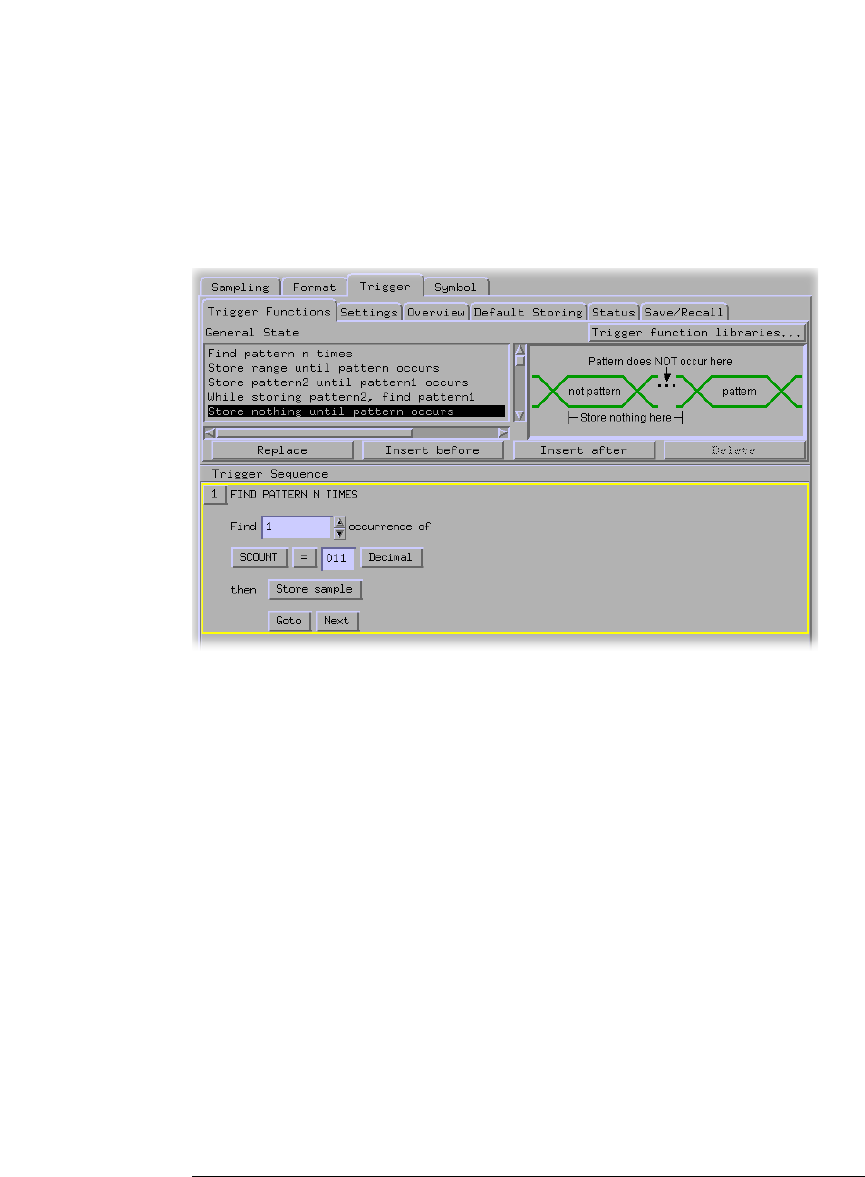Installation guide
Table Of Contents
- A Quick Tour
- Before You Begin
- Introduction to Timing Analysis: Trigger on an Edge
- Verify Pulse Widths
- Introduction to State Analysis: Trigger on an Event
- Trigger on a Sequence of Events
- Trigger on a 4 Bit Serial Pattern
- Trigger the Oscilloscope with the Timing Analyzer
- Load the RESET Configuration File
- Connect the Oscilloscope Probe and Turn the Glitch On
- Get the Analog Waveform on the Display
- Set Up the Timing Analyzer
- Set Up the Timing Analyzer to Trigger on the Glitch
- Tell the Oscilloscope When to Trigger
- Set Up the Analyzer to Arm the Oscilloscope
- Run the Timing Analyzer and Oscilloscope
- Add the Analog Waveform to the Timing Waveform
- Turn the Glitch Off
- Save Your Work
- Lesson Summary
- Using the Pattern Generator
- Load the RESET Configuration File
- Connect the Pattern Generator
- Set Up the Timing Analyzer
- Set Up the Bus Labels
- Define the Trigger Conditions: Trigger on a 1
- Set Up the Pattern Generator
- Program the Pattern Generator Output
- Start the Pattern Generator and View the Walking Ones Pattern
- Stop the Pattern Generator
- Save Your Work
- Lesson Summary
- Setting the Jumpers
- About the Credit Card Board

79
Chapter 6: Trigger on a Sequence of Events
Trigger on a Sequence of Events
6 Click on Trigger and fill memory and select Insert ACTION,
Store, and then Store sample.
7 Below Store sample, click on Trigger then fill memory and
select Goto.
To tell the analyzer to find the rest of the sequence 022, 033, and 044
before triggering, we will set up three more sequence levels similar to
the one finding 011.
8 On the button bar above Trigger Sequence 1, select Insert after
to insert a Trigger Sequence 2.
9 In the Trigger Sequence 2, click on Hex and select Decimal.
10 In the Trigger Sequence 2, click in the field to the right of
SCOUNT =, and type 022.










